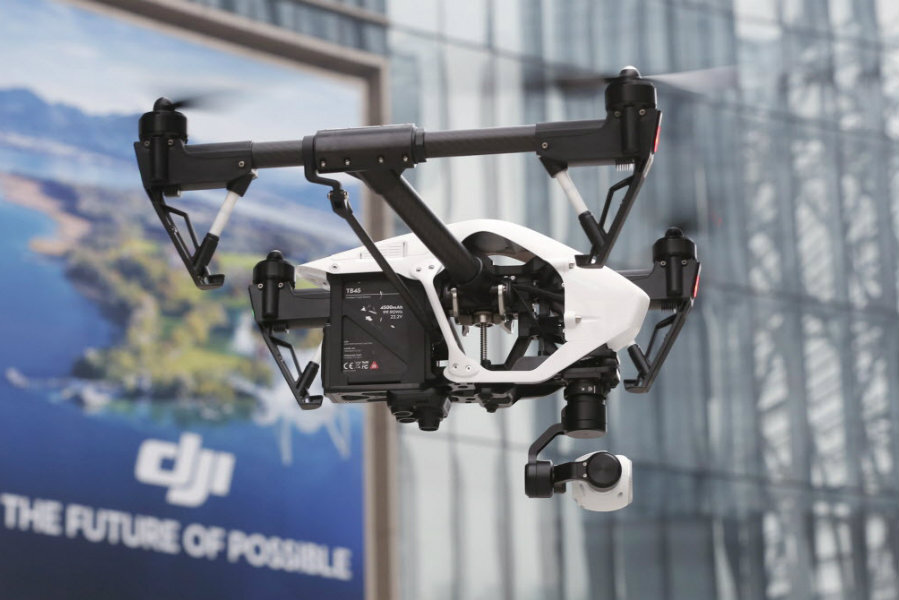The rise of the everyday drone?
Loading...
One year ago, Amazon chief executive officer Jeff Bezos unveiled his plan for a fleet of flying delivery robots. Legal snarls have grounded commercial interest in using unmanned vehicles. But now, the rules are evolving again.
Q: In what ways may companies use drones?
Basically, they can’t use drones. The Federal Aviation Administration (FAA) prohibits using an unmanned flying vehicle for commercial purposes. This means wedding photographers may not use quadcopters to snap aerial pictures, farmers may not use drones to monitor crops, and Amazon’s dream of automated deliveries is pie in the sky.
Companies may apply for an exemption from the FAA rule – Amazon filed its paperwork in July – but, so far, regulators have granted permission to only a handful of companies, primarily filmmakers and oil companies. While many small-time businesses get away with breaking these rules, the FAA has written cease-and-desist letters and issued fines of as much as $10,000 to people in at least nine states.
Q: What about flying drones for fun?
Go for it. Hobbyists enjoy a completely different set of rules. While Americans may not fly unmanned vehicles for commercial purposes, dronemakers and retailers expect sales to take off this year. The Consumer Electronics Association predicts that drone sales will reach $130 million in 2015, a 55 percent jump from last year.
The FAA has set five general rules for amateur drone pilots:
- Don’t fly higher than 400 feet off the ground.
- Never lose line of sight with the vehicle.
- Make sure the drone weighs less than 55 pounds (about the heft of two cinder blocks).
- Stay away from airports and other manned vehicles, such as helicopters.
- And, of course, don’t try to make money off of your new toy.
Individual states and parks may have additional rules. Yellowstone and Yosemite national parks, for example, banned drones last year after reports of several crash landings and harassed wildlife.
Q: Will these rules change anytime soon?
Yes, but slowly. The current drone regulations arrived as a stopgap while the FAA irons out its official guidelines. Congress mandated that the FAA finalize these rules by September 2015 and wanted a draft by the end of 2014. As of press time, the FAA had not completed the draft. The agency admits it will likely miss the autumn deadline, too. “We agree that we need to speed this up a little bit,” Margaret Gilligan, FAA associate administrator for aviation safety, said in December during a House hearing about the changes.
Early reports about the upcoming regulations suggest that the FAA would permit more companies to experiment with drones, but the pilots might need cockpit experience and perhaps medical exams before flying an unmanned vehicle commercially.
Last month, the FAA granted its first exemption to a real estate agency – a sign that these restrictions may indeed loosen with time. Tierra Antigua Realty in Tucson, Ariz., plans to use quadcopters to shoot photos of houses that are for sale.
Q: What are the rules in other countries?
Many countries have much more liberal rules when it comes to unmanned vehicles. While Amazon battles with regulators, its dream of aerial deliveries is already a reality in Germany. In September, DHL launched its first “parcelcopter,” a small delivery drone that ferried medicine to Juist, a German island with a population of fewer than 2,000 people. The company hopes to expand the program and deliver supplies to remote areas around the world.
The United Arab Emirates has launched a “Drones for Good” competition, offering $1 million for the most innovative use of unmanned flying vehicles. “We want to save time, to shorten distances, to increase effectiveness, and to make services easier,” says Dubai’s ruler, Sheikh Mohammed bin Rashid al-Maktoum, in a statement.
Farmers in France use drones to gather crop data and intelligently distribute fertilizer, a practice that has boosted yields for some Japanese farms by approximately 15 percent, according to the Association for Unmanned Vehicle Systems International, a trade group based in Arlington, Va.
With the FAA’s comparatively harsh rules, many American companies have moved their drone divisions overseas. Amazon’s team settled in Britain and Canada. Google set up its drone lab in Australia.
Q: Do Americans even want drones zipping overhead?
Maybe not. Only 1 in 4 Americans likes the idea of delivery drones, according to a survey by The Associated Press and market research firm GfK. The poll, conducted in December, found that Americans opposed the idea of commercial drones by a 2-to-1 margin. However, many respondents (34 percent) had not made up their minds yet. If the FAA relaxes its rules in 2015, Amazon would love the chance to convince shoppers that drone-borne deliveries are worth exploring further.
For more on how technology intersects daily life, follow Chris on Twitter @venturenaut.





